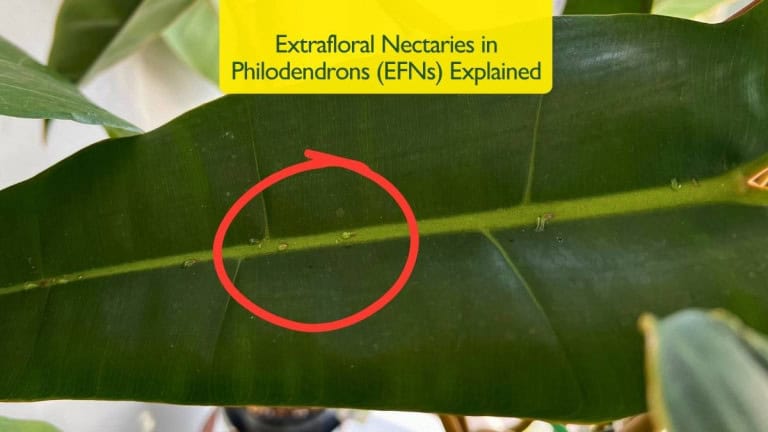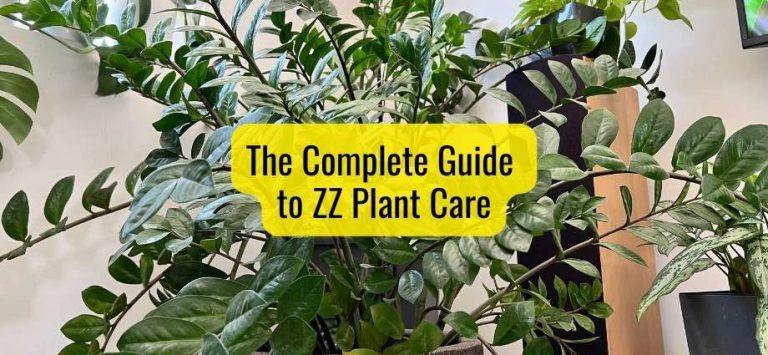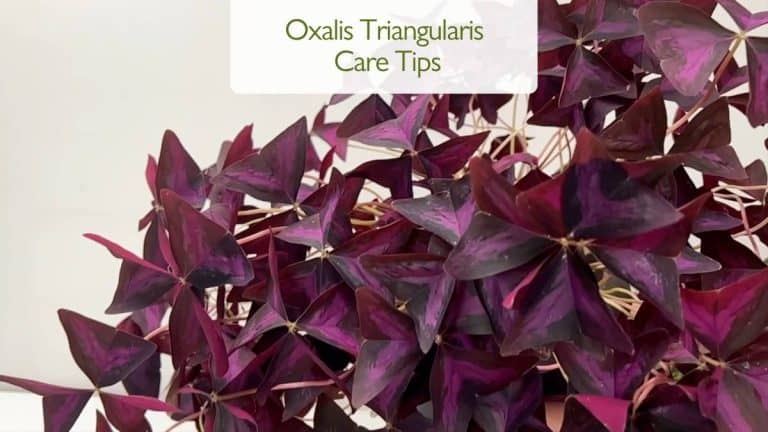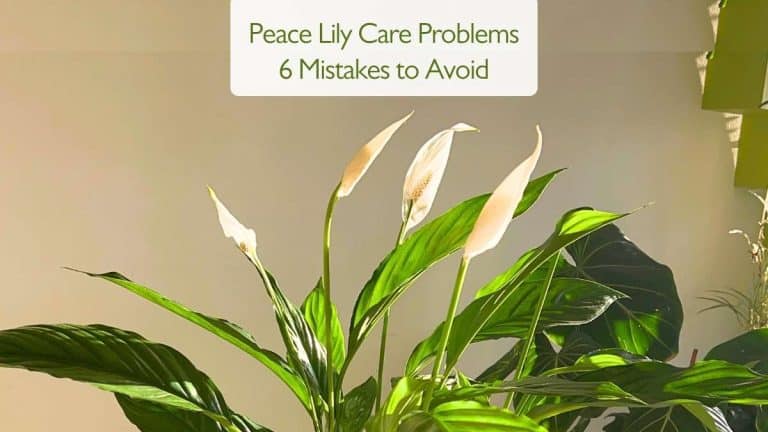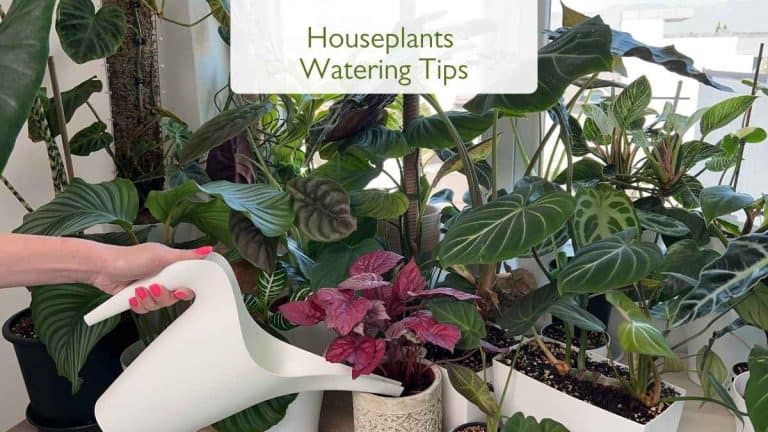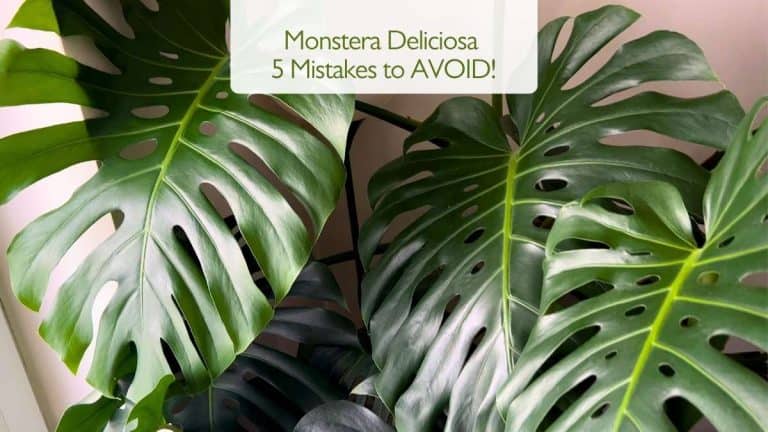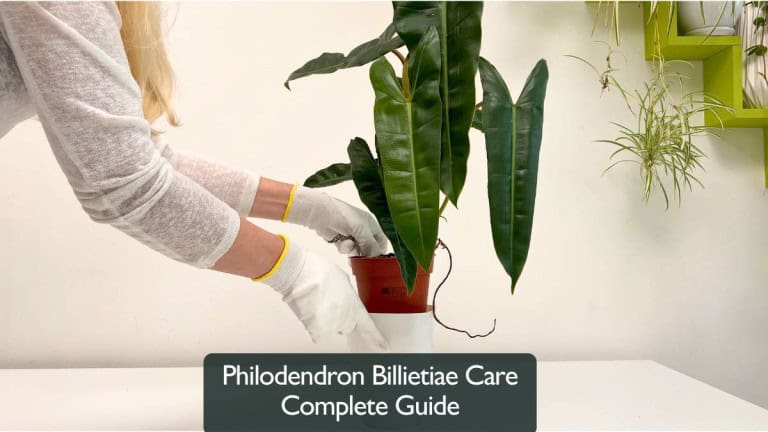Extrafloral Nectaries in Philodendrons (EFNs) – Explained
Are you struggling with yellow or brown spots on your Philodendron leaves?
Well, you’re not alone. Many plant lovers notice sticky dots, tiny brown marks, or glossy spots on their Philodendrons and immediately fear the worst – pests, fungal infections, or nutrient problems. But in most cases, there’s no reason to panic.
What you’re seeing might actually be a fascinating part of your plant’s biology, called Extrafloral Nectaries in Philodendrons.
What Are Extrafloral Nectaries in Philodendrons?
Extrafloral Nectaries in Philodendrons are tiny nectar-secreting glands that appear on parts of the plant outside the flowers – most often along the petioles, leaf blades, or at the junction where the leaf connects to the stem.

Although the word “floral” might sound like these glands belong to flowers, that’s a common misconception. The term “extra-floral” literally means “beyond the flower” – indicating that these glands function independently of the plant’s reproductive structures.
In the case of Philodendrons, which rarely bloom indoors, these glands are still very much active. They are part of the vegetative anatomy, not tied to flowering. Microscopic studies have confirmed their presence across several species of the genus, showing that they secrete small amounts of sugary nectar even on young leaves and petioles.
This nectar isn’t a waste product; it’s a carefully designed defense mechanism. In nature, it attracts protective insects like ants, which in turn guard the plant from herbivores and potential damage. So when you notice tiny sticky droplets on your Philodendron leaves, you’re actually seeing a sign of a healthy, functioning plant. Extrafloral Nectaries in Philodendrons are a completely natural feature, not a pest problem or disease – and they show that your plant is actively defending itself and thriving.

How to Tell Extrafloral Nectaries Apart from Guttation and Pest Honeydew
These natural processes can look similar, but they have very different causes and meanings for your plant.
However, not everything that looks sticky on a Philodendron is caused by Extrafloral Nectaries in Philodendrons. Houseplant owners often confuse EFNs, guttation, and pest honeydew, since all three can leave shiny or sticky spots on leaves. Each has a completely different cause – one is a natural defense, one is a result of water pressure, and one signals pests.
Guttation happens when your Philodendron releases excess water through special pores called hydathodes, usually along the leaf edges or tips. It often appears as clear droplets that later dry into tiny white mineral marks. It’s not a problem – just a natural way for the plant to relieve internal water pressure, especially after watering or at night.

Pest honeydew, on the other hand, is a sticky substance left behind by insects such as aphids, mealybugs, or scale. It often spreads across leaves, feels tacky, and may attract dust or cause a black, sooty mold to appear. If you notice this, inspect your plant carefully – honeydew always indicates active pests.
To help you tell them apart easily, here’s a simple visual comparison:
Extrafloral nectar (EFNs)
Texture & Look: Sticky, clear to slightly amber; appears as tiny dots or rings.
Where It Shows: Petiole joints, leaf-surface “freckles,” or near the prophyll on new growth.
When It Shows: During new growth, warm/humid conditions, or after repotting.
Meaning: Natural defense trait — not a disease. ResearchGate
Guttation
Texture & Look: Watery droplets that may leave a white mineral crust after drying.
Where It Shows: Leaf tips/edges (hydathodes).
When It Shows: Night/early morning, after heavy watering or high soil moisture.
Meaning: Harmless water-pressure release; reduce watering if excessive. Foliage Factory
Pest Honeydew (Aphids, Scale, Mealybugs)
Texture & Look: Sticky film that spreads; can develop sooty mold; pests usually visible on undersides/nodes.
Where It Shows: Undersides, stems, wider areas.
When It Shows: Any time pests feed.
Meaning: Pest infestation — inspect, isolate, treat. Scottish Pollinators
Why Philodendrons Have Extrafloral Nectaries
In the wild, Extrafloral Nectaries in Philodendrons are part of the plant’s natural defense system. Instead of relying solely on chemical defenses or tough leaves, Philodendrons use these tiny nectar glands to attract helpful insects – mostly ants and other predatory species. The sugary nectar acts as a reward, encouraging these insects to patrol the plant’s surface and protect it from herbivorous pests such as caterpillars, beetles, or mites.
This relationship is an example of mutualism – both the plant and the insects benefit. The Philodendron gains constant protection, while the insects get a reliable food source. It’s a clever, low-energy trade-off that helps the plant conserve resources and survive in dense tropical forests where pest pressure is high and competition for light and nutrients is intense.
Even in indoor conditions, these Extrafloral Nectaries in Philodendrons can remain active. So when your houseplant produces sticky droplets, it’s not only responding to its environment – it’s expressing a built-in survival mechanism that has evolved over millions of years. It’s one of the many reasons Philodendron species are so resilient and adaptive, both in nature and in our homes.
Should You Worry About EFNs?
Not at all. Sticky dots on your Philodendron aren’t a sign of disease or poor care. They’re completely normal and even a sign that your plant is active and healthy. You can simply wipe them away gently with a damp microfiber cloth during your regular leaf-cleaning routine.
These tiny nectar droplets often appear more frequently when humidity or temperature rises, or when your plant is producing new growth. If you want to learn more about the ideal balance, check out my article on Humidity and Temperature for Houseplants, where I explain how both factors affect leaf health and plant growth.
I have them on several of my Philodendrons – including Billietiae, Jungle Boogie, Birkin, Prince of Orange, White Princess, and Pink Princess. I’ll admit, I was quite disappointed at first. The small sticky dots often dry into tiny marks that seem to ruin the perfect look of those beautiful leaves. But over time, I learned that they’re completely natural and harmless – just part of how Extrafloral Nectaries in Philodendrons function.
If you ever notice a wide sticky film that spreads or leaves developing a sooty coating, that’s when you should inspect your plant more closely for pests. Otherwise, don’t worry, your Philodendron is doing exactly what it’s meant to do.
Are Necrotic Flakes the Same as Extrafloral Nectaries?
There’s another condition that often confuses many plant parents – it’s called necrotic flakes. At first glance, they can look similar to extrafloral nectaries, which is why many people mistake them for dried or damaged EFNs. But they’re actually something completely different.

While Extrafloral Nectaries in Philodendrons (EFNs) are living glands that secrete a sugary, sticky nectar, necrotic flakes are patches of dead tissue that form when a part of the leaf or petiole gets damaged. This damage can be caused by low humidity, fertilizer burn, rapid temperature changes, or even slight mechanical injury when new leaves unfurl. The affected cells dry out and harden into a brown or blackish “scab” that feels rough or flaky to the touch.
The biggest difference is in texture: EFNs are glossy and sticky, while necrotic flakes are dry and crusty. EFNs show that your Philodendron is functioning normally, but necrotic flakes are simply scars from past stress – not an active process.
If you’re unsure which one you’re seeing, I’ve explained and shown the difference in detail in my article and video “Philodendron Birkin Problems.” There, you’ll see clear close-up examples of both conditions and learn how to recognize them instantly. The video is embedded below so you can watch the comparison directly.
Click here to watch the video on YouTube
How to Care for Philodendrons with Extrafloral Nectaries
Taking care of Philodendrons with Extrafloral Nectaries is simple, you don’t need to change your care routine, just understand what’s happening and keep the leaves clean. These glands are a natural part of the plant’s anatomy, and once you recognize them, they’ll no longer be a source of worry.
Gently wipe the leaves with a soft, damp microfiber cloth whenever you notice sticky droplets. This helps remove dust, prevents ants from being attracted, and keeps the foliage glossy and healthy. You can also try my simple DIY Shiny Leaf Recipe for an all-natural way to clean and shine your Philodendron leaves without clogging their pores.
Make sure your Philodendron has good airflow around it, especially in warm and humid conditions. Proper ventilation helps the nectar dry faster and reduces the risk of pests. Avoid overwatering – high soil moisture combined with high humidity can cause extra guttation and leave water stains on the leaves.
If you grow many Philodendrons close together, occasionally check the undersides of leaves to make sure there are no pests hiding. EFNs themselves are harmless, but their sweet scent can attract small insects if your room has poor airflow.
Most importantly, don’t try to remove or treat these glands – they’re part of what makes Philodendrons unique and resilient. Understanding Extrafloral Nectaries in Philodendrons is one of those small plant discoveries that helps you appreciate how complex and beautifully designed these tropical plants really are.

Final Thoughts on Extrafloral Nectaries in Philodendrons
Understanding Extrafloral Nectaries in Philodendrons helps every plant lover see these fascinating tropicals in a new light. What once seemed like a sticky problem is actually a sign of your plant’s natural intelligence, a reminder that even in our homes, they’re still following ancient biological rhythms designed for protection and survival.
So next time you notice tiny shiny dots or droplets on your Philodendron’s leaves, don’t worry. That’s not damage – it’s your plant communicating in the only way it knows how. Keep observing, caring, and learning from it. The more we understand the small details like these, the stronger our connection with plants becomes.
Philodendrons are remarkable teachers of resilience and adaptation. And knowing about Extrafloral Nectaries in Philodendrons is just another way to appreciate how alive and beautifully complex these plants truly are.
Related Topics
If you enjoyed learning about Extrafloral Nectaries in Philodendrons, you might also like:
- Philodendron Pink Princess Care & Problems
- How to Get Rid of Spider Mites on Houseplants
- Winter Houseplant Care Tips
🌿 Explore More: Visit the full Philodendron Care & Guides category for detailed tips, problem-solving guides, and care advice for all your favorite Philodendron varieties.
Click here to watch the video on YouTube
Click here to watch the video on YouTube
Explore More Music for Your Plants & Stay Connected!
Check out my Playlist: Music for Plants and find the perfect tunes to help your plants and yourself thrive.
Don’t forget to visit my YouTube Channel Plant House & Garden and subscribe — your support means the world to me!
Connect with me on social media for more plant care tips and music updates: Instagram | Facebook | X | Pinterest | Reddit | TikTok
Love plants? Love music? Don’t miss out on new updates – hit subscribe and follow now to keep your plants happy and your space vibrant!

